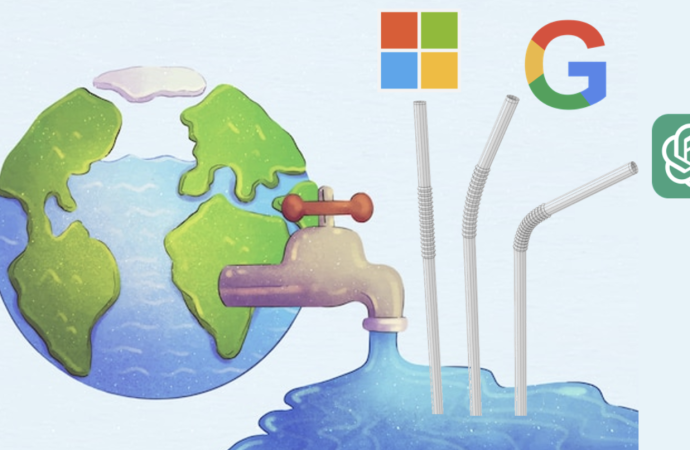Artificial Intelligence (AI) is transforming industries by improving processes, driving innovation, and solving tough problems. In water management, AI has made significant progress, helping to monitor water quality, predict floods, and optimize water distribution systems, ensuring sustainable access to this vital resource. But AI itself uses water, a fact that often goes unnoticed. AI systems

Artificial Intelligence (AI) is transforming industries by improving processes, driving innovation, and solving tough problems. In water management, AI has made significant progress, helping to monitor water quality, predict floods, and optimize water distribution systems, ensuring sustainable access to this vital resource.
But AI itself uses water, a fact that often goes unnoticed. AI systems require substantial computational power, which is provided by energy-heavy data centers. These centers need a lot of water to cool their servers. This article looks into how AI consumes water, the scale of its usage, and how industries are tackling the issue.
How AI Uses Water
Training an AI model needs a massive amount of computational power. For example, large language models like ChatGPT process billions of parameters. These calculations generate heat that needs to be managed to keep servers running smoothly and prevent them from overheating.
Water is often used as a cooling agent in data centers. Here’s how it works:
- Cooling systems: Servers are housed in data centers equipped with cooling towers or systems that circulate water to absorb the heat generated by the servers.
- Evaporation: As the water absorbs heat, it evaporates, cooling the equipment in the process.
- Water replacement: The evaporated water needs to be replaced regularly.
This cycle uses a lot of resources. A single AI model training session can consume thousands of liters of water.
AI’s Water Footprint
Recent studies have measured the water consumption of AI:
- ChatGPT usage: A typical query to ChatGPT uses about half a liter of water. This is due to the energy required to process the query and cool the servers.
- Model training: Training a large language model like GPT-3 can require hundreds of thousands of liters of water. For instance, training GPT-3 in Microsoft Azure data centers reportedly consumed over 700,000 liters of freshwater.
The environmental impact of AI isn’t just about water. These operations also consume large amounts of electricity, which in turn affects water usage due to the energy production process.
AI’s Role in Water Management
Ironically, AI is also helping to manage water more efficiently:
- Leak detection: AI-powered systems can spot leaks in water networks, preventing water wastage.
- Flood prediction: AI analyzes weather data to predict floods, allowing better preparedness.
- Agricultural irrigation: Smart irrigation systems powered by AI ensure crops get just the right amount of water, minimizing waste.
These AI applications help save billions of liters of water each year. While AI is contributing to water conservation, its own water consumption raises ethical and sustainability concerns.
Addressing the Issue
Tech companies are finding ways to reduce AI’s water consumption:
- Energy-efficient cooling systems: Innovations like liquid immersion cooling are reducing the need for water by using alternative cooling methods.
- Optimized data centers: AI is being used to enhance cooling efficiency, minimizing both water and energy usage.
- Location-specific solutions: Data centers are being built in cooler regions or near renewable water sources to lessen environmental impact.
- Water recycling: Closed-loop systems are allowing data centers to reuse water rather than continually drawing fresh supplies.
Looking Ahead
As AI continues to grow, its water usage will increase. Companies, policymakers, and researchers must collaborate to find a balance between AI’s benefits and its environmental impact. Developing solutions to reduce AI’s water footprint will be crucial for ensuring its sustainable growth.

















Leave a Comment
Your email address will not be published. Required fields are marked with *